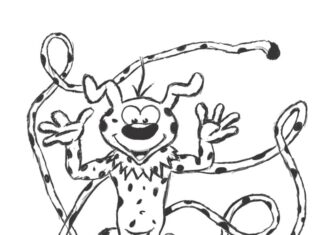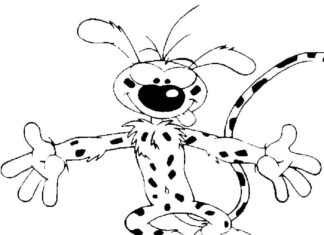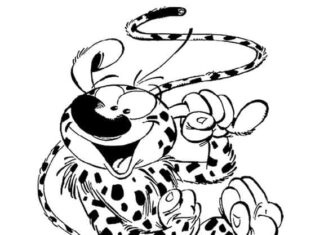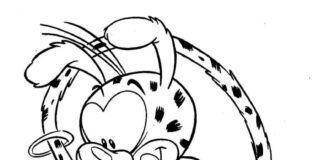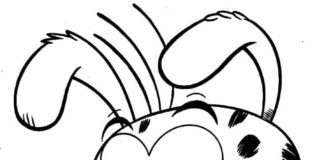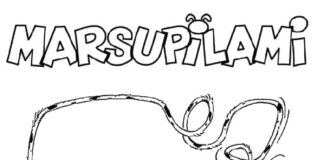Marsupilami is a fictional created by Belgian author Andre Franquin. It is a fictional animal in the mammal category, characterized by an exceptionally long tail and extraordinary abilities. Marsupilami first appeared in the comic strip "Spirou and Fantasio" in 1952.
Marsupilami Coloring Book
Information
- Physical Characteristics: Marsupilami is an animal with an exceptionally long tail that is flexible, strong and serves as a versatile tool. It has an extremely developed sense of hearing, which enables it to respond to sounds from a distance.
- Landscape: Marsupilami inhabits the dense jungles of South America, particularly in the fictional region of Palombia, which is a frequent backdrop for Marsupilami's adventures.
- Skills and Behavior: This creature has amazing abilities, such as extraordinary physical strength, speed, agility and the ability to jump long distances. Marsupilami can also make various sounds, thus communicating with other animals.
- Comic Book History: Marsupilami made his debut in 1952 in the Belgian comic strip "Spirou and Fantasio," drawn by André Franquin. He quickly gained popularity and became one of the main characters in many comic book adventures.
- Marsupilami in Pop Culture: Marsupilami's popularity has resulted in adaptations for television and cinema. The creature became the lead character in the animated series "Marsupilami" and appeared in the 2012 live-action film "Marsupilami."
- Ecology and Conservation: Many of Marsupilami's adventures deal with environmental and conservation themes, showing the beauty of wildlife and its dangers.
- Humor and Adventures: Comics and animations related to Marsupilami often combine humor, adventure and fantasy elements. Marsupilami's adventures are full of exciting situations and amusing adventures.
- Children's Books: In addition to comic books and series, Marsupilami has also become a character in children's books, which introduce younger readers to the world of this charming and unusual character.
Trivia
- First Appearance: Marsupilami made his debut in the comic strip "Spirou and Fantasio" in 1952. His appearance brought a new dose of freshness and fantasy to the series.
- Inspired by the Fauna of South America: Marsupilami is inspired by the fauna of South America, especially lemurs, monkeys and other animals found in the jungle.
- Unique Tail: Marsupilami's most distinctive feature is his long tail, which is not only an ornament but also a tool he uses for various purposes.
- The Case of the Invented Gene: In the comic, Marsupilami owes his extraordinary abilities to a mysterious gene called "marsupilami." This fictional scientific name adds humor to the character.
- Popular Culture: Marsupilami has gained immense popularity in popular culture and has been translated into many languages, attracting fans from different countries.
- Animated Series: Marsupilami became the hero of his own animated series, which won a wide audience of younger viewers. The series was popular because of the adventures of Marsupilami and his friends.
- Organic Thread: Many of the Marsupilami stories touch on conservation and ecology, helping to draw attention to these important issues.
- Oscar Short Story: In 1992, Marsupilami appeared in the animated short film "Marsupilami: Hoobah Hoobah Hop!", which was nominated for an Academy Award in the animated short category.
- Marsupilami language: In the cartoons, Marsupilami makes sounds and communicates with his characteristic "Houba, Houba" and other noises, which adds to his humorous expression.
- References in Culture: Marsupilami has often appeared as a reference in other works of culture, including video games, movies or TV series, a testament to his status as a pop culture icon.

